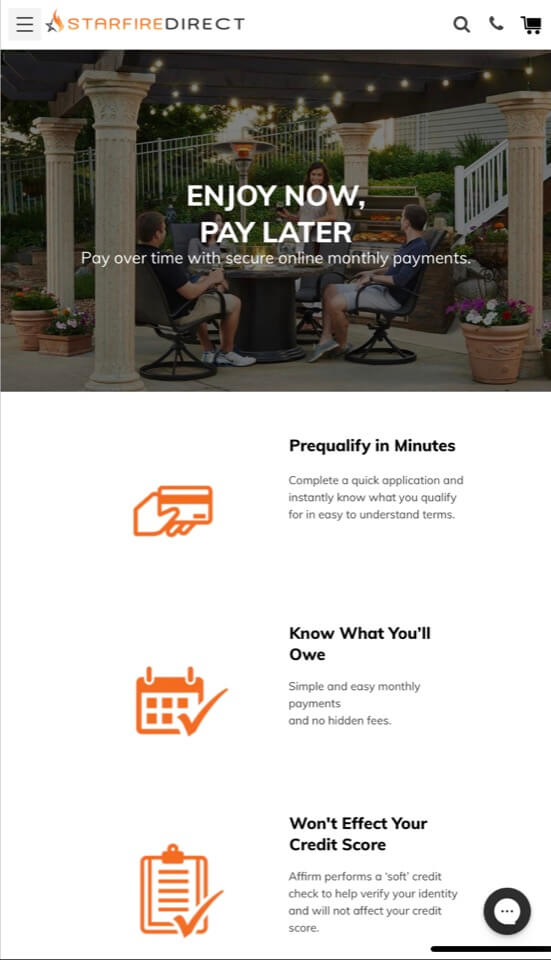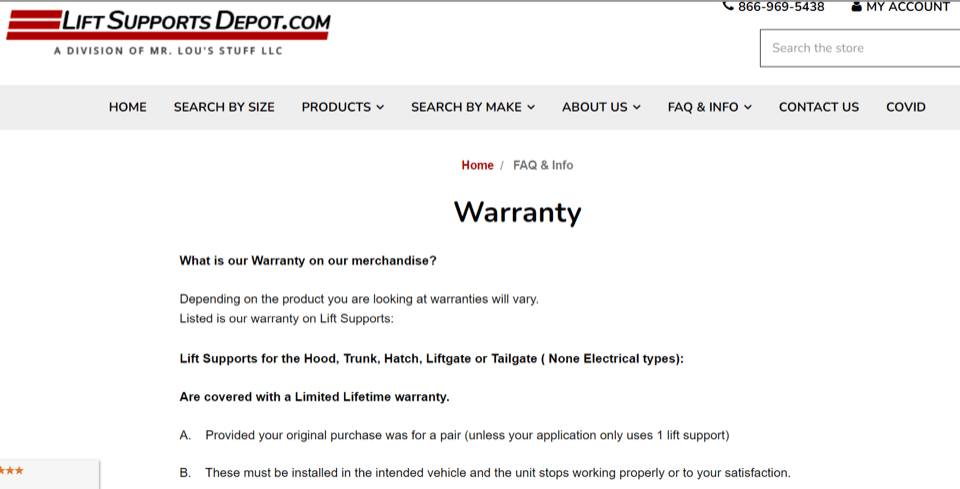Ecommerce is one of the fastest-growing sectors in retail. Consumers in the US spent $870.78 billion online in 2021, up 14.2% from $762.68 billion the prior year. In a crowded market, many consumers make purchasing decisions based on trust rather than convenience. In addition to professional website design and high-quality content, value-added services such as product protection can raise consumer confidence—and there’s more than one way to create an enticing product protection plan.
What is Product Protection?
To set up a product protection plan, it’s important to have a basic understanding of the process. Product protection is an effective way to attract new customers and increase overall satisfaction. It covers customers’ product purchases for a certain period of time, guaranteeing their functionality for that period and offering the opportunity for replacement or repair if they do not. These plans are relatively easy to administer, as the only additional step required is asking customers if they want the product protection when they check out. This offers an opportunity to distinguish products from those of competitors and generate additional revenue. In 2019, the global extended warranty market size was valued at $120.79 billion and is projected to reach $169.82 billion by 2027.
Product protection services come in many forms and include benefits like extended warranties and coverage for specific damage or accidents. Some common examples include:
- Product Insurance: Straightforward product insurance usually covers a product if it is lost or damaged in some way. This is especially common for items of high value, such as jewelry.
- Product Protection Plans: These may protect a product from certain events like loss or theft. Some protection plans replace older versions of a tech product if a new version becomes available within a specified period.
- Extended Warranties: Extended warranties, also known as extended service contracts, are often offered for products like cars and electronics. They cover repairs, damage, and lack of functionality for a period of time longer than that covered by the manufacturer.
- Pricing Protection Plans: Pricing protection plans cover a purchaser in case the customer can find the same product for a lower price within a specified period.
Product protection is an attractive option for customers who may be hesitant about making a purchase or have high expectations for a particular product. When a customer buys a product, they are often concerned that something may go wrong to prevent the use of the item. This is where product protection comes in: guaranteeing a refund or replacement, so if something does go wrong, can ensure customer satisfaction.

Why Do Customers Value Product Protection?
As ecommerce shopping continues to grow, customers shopping online want to feel confident in their purchases without seeing the products in person. Worrying about a product breaking continues to be one of the top 5 consumer concerns around purchasing a device online. While convenient and common, online shopping means that customers don’t get to view the product firsthand before purchasing. Offering product protection plans represents great customer service and boosts brand loyalty and brand trust, all while promoting sales.
Here are a few areas of customer concern that product protection can help with.
Product Protection
Customers have expectations surrounding how long a product should last and what issues the company will and will not cover. It’s important to set clear expectations for great customer experience. Offering an extended warranty or similar protection plan allows business owners to define what’s covered and what’s not.
Customer Service
An amazing customer experience is a competitive advantage. From the beginning of a product’s life to the end, consumers want to feel valued and appreciated. Roughly 50% of consumers say they would switch to a new brand after only one bad experience. Offering protection plans allows customers to understand what will and won’t be covered when they purchase and should lead to a simple, straightforward solution if something does go wrong with the product.
Product Quality
Making an expensive purchase online can be daunting. Offering product protection signals products’ high value. Product protection helps customers feel confident that their product investment will pay off. They’ll also feel confident that even if something does go wrong, they’ll be covered.
Flexibility
Flexibility matters a lot to ecommerce customers, and a strict return policy can cause customers to decide not to make a purchase. Customers prefer protection plans over strict return policies and want to be able to easily cancel their product protection should they change their mind. Great protection plans offer fast and flexible support.

What are the Benefits to an Ecommerce Business?
In today’s ecommerce age, 55% of customers no longer trust companies as much as they used to. Enhancing website credibility with product protection can help boost sales. Offering product protection comes with numerous benefits:
- Added Revenue. Product protection plans can increase order revenues with little to no overhead. Offering an extended warranty or optional insurance as an add-on can represent a significant revenue increase. Extended warranties are designed to pay out in favor of the retailer, so while customers gain extra protection, business owners also benefit.
- Added Value. Product protection can add value in customers’ eyes, especially if it’s offered as part of the listed price or as a package deal.
- Set a Business Apart From Competitors. If a customer is debating between buying a product from a couple of different businesses, an extended warranty or protection package can help them make their decision.
- Brand Interaction Potential. Product protection can also increase brand loyalty and keep customers in contact with an ecommerce brand over time by increasing points of brand interaction. Customers may need to renew their plan, pay a monthly fee, or interact with a business in other ways, which helps strengthen the consumer-brand relationship.
- Long-Term Customer Satisfaction. Customers want options when their products break or need to be repaired. Providing options will help guarantee their satisfaction in the future. Protection plans lead them back to the business to make the situation right, which can lead to increased brand loyalty.
Product protection plans are an effective way to ensure that customers remain loyal and satisfied, which can deliver incredible results for ecommerce businesses. Product protection offers customers the security they need when making purchases and gives businesses a way to build loyalty with them. Whether business owners choose to automate protection plans or make them available as an optional “extra,” they can boost sales and brand loyalty with this value-added service.
Composing an Effective Product Protection Plan
To realize the benefits of product protection, business owners need to learn how to set up a strong product protection plan. These are our top tips for establishing effective product protection for an ecommerce business.
- Follow all relevant laws that apply to warranties. In the US, businesses that provide warranties must follow the rules in the Magnuson-Moss Act. Business owners must state whether the warranty is full or limited, provide one easy-to-understand document outlining the warranty, and provide warranties to customers before purchase if requested. Retailers may want to consider hiring a lawyer to ensure their plan meets the requirements of all relevant legislation.
- Give customers the option to extend their plan. Customers may feel more secure in their decision to purchase big-ticket items if their warranty can be extended. Business owners might consider granting their customers a few extra days or weeks to purchase their extension; it can be a good strategy to boost revenue.
- Clearly state the length of time that the product is covered, and what the warranty does and does not do. Customers need to know the exact timeframe in which they can return or repair their products. Business owners should be specific in writing out this timeframe, as well as exactly what the warranty will cover.
- Set up a team or department to handle protection plan concerns. Customers need to be able to reach out to someone with product returns, complaints, and other inquiries surrounding product protection. Retailers should designate a team to handle these issues so that their customers are satisfied with their experience and retain trust in the business’s protection plan.
Retailers should be specific about what the protection plan covers, set the length of time that it’s covered, give the option to extend plans, and set up a department to handle product protection-related concerns. Ecommerce website design and content should clearly advertise the business’s protection plan and explain it concisely to customers.

Considering Additional Value-Added Services
Providing value-added services for customers doesn’t have to end with product protection. Today, even small companies can offer buy now, pay later financing and other payment options, as well as shipping insurance and similar services. These services complement each other and add value to ecommerce businesses. For instance, customers may decide to purchase at a higher value due to the offer of an extended warranty, which will increase average order value. Extended warranties typically add 10-15% to a customer’s shopping cart value. Additional benefits of value-added services include:
- Greater customer loyalty and brand interaction. Product protection plans coupled with additional value-added services act as a meaningful touchpoint between the customer and the ecommerce business while increasing trust and loyalty through clear product expectations and purchasing flexible options.
- Increased purchase conversion. Recapture sales from abandoned carts! The presence of product protection options grants customers additional peace of mind and trust, therefore increasing overall purchase conversion rates and boosting sales.
As an increasing volume of commerce moves from brick-and-mortar stores to ecommerce, businesses continue to see an increase in value-added service offering to improve customer experience. Retailers can give customers the options they want and enjoy the results of multiple value-added services working in tandem.

Equipped with this knowledge about product protection, business owners should be able to assess whether this service would benefit their ecommerce business. Another factor to consider when seeking opportunities to improve a business is whether to employ the services of a web design agency. At BESTWEB, we’ve compiled a comprehensive list of the best web design services companies available to help business owners find the right partner to take their ecommerce businesses to the next level. Browse the list to find a perfect match, and experience serious ecommerce success. Follow our blog to stay informed on web design best practices.

